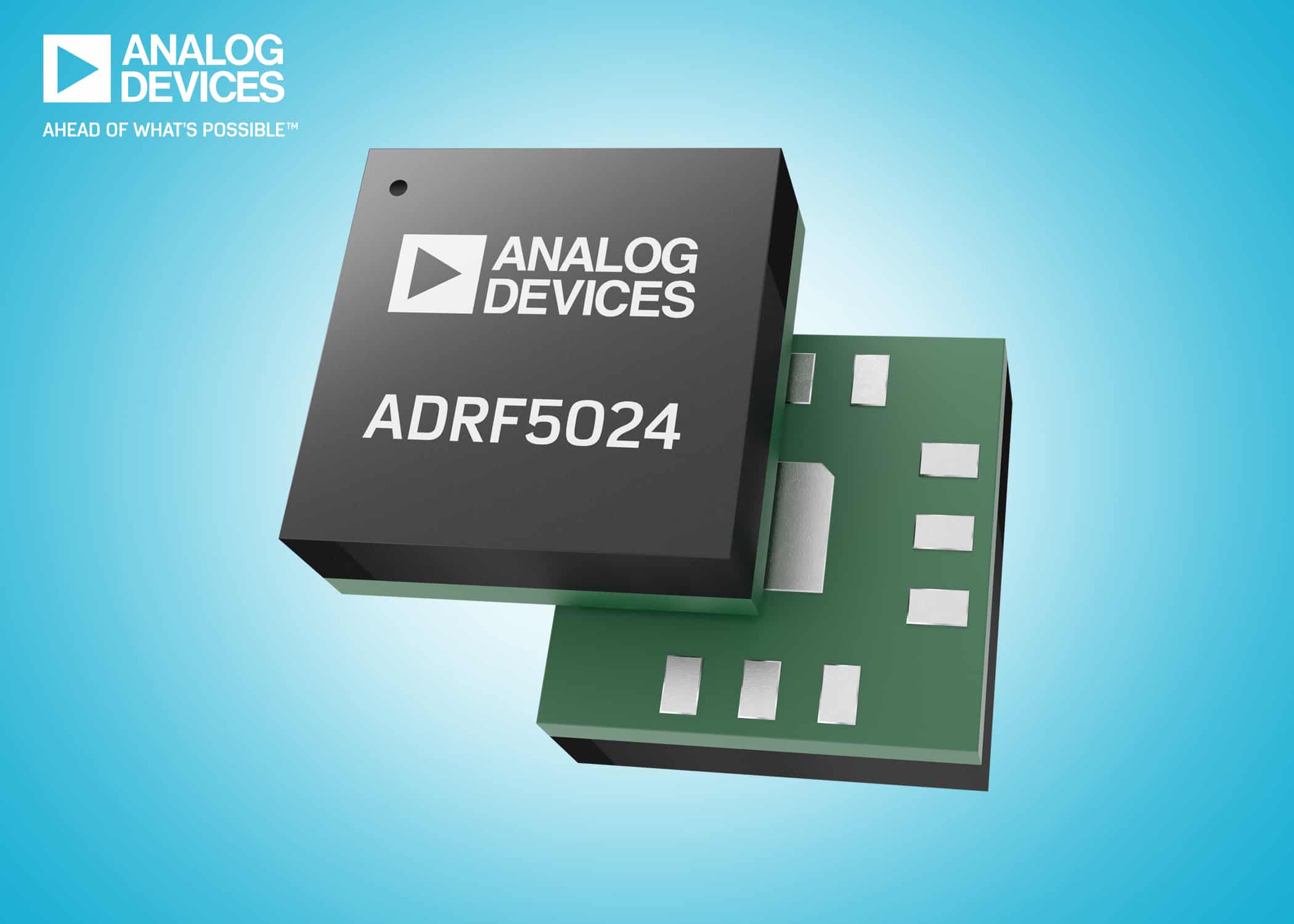
Analog Devices, Inc. announced today production release of its 44 GHz single-pole, double-throw (SPDT) switches, the ADRF5024 and ADRF5025 in advanced Silicon-on-Insulator (SOI) technology. The two new switches are broadband, with the ADRF5024 yielding flat frequency response from 100 MHz to 44 GHz, while the ADRF5025 from 9 kHz to 44 GHz, with repeatable characteristics better than 1.7 dB insertion loss and 35 dB channel to channel isolation. Both parts support 27 dBm power handling for both through and hot-switching conditions. The new switches come in a compact, highly reliable, 2.25 mm x 2.25 mm surface-mount-technology (SMT) compatible package, exhibiting electrical performance beyond incumbent solutions, which will benefit radio frequency (RF) and microwave design experts, saving bias power, eliminating peripheral components and achieving higher integration in systems such as phased arrays, portable instrumentation, high resolution body scanners and next generation millimeter-wave communication infrastructure for emerging 5G and high-constellation satellite networks.
The ADRF5024 and ADRF5025 employ inherent reflective architecture and are characterized for operating temperature range of –40°C to 105°C. All pins incorporate robust Electro-Static-Discharge (ESD) protection. The devices are nominally powered by ±3.3 V, drawing low supply current of less than 120 µA typical. The devices use standard positive logic control voltages, simplifying the interface design.
The ADRF5024 and ADRF5025 are ideal replacements for PIN diode-based counterparts, as no external components are necessary for bias generation or matching, and signal pins are internally biased at ground (GND) reference to eliminate the need for direct-current (DC) blocking capacitors.
The ADRF5024 is optimized for fast switching applications with speeds less than 10 ns and edge rates at 2 ns. Whereas the ADRF5025 is optimized for ultrawideband applications with good low frequency characteristics down to 9 kHz. The other characteristics are the same so the parts are drop-in alternative to each other and can be used interchangeably on the same printed circuit board (PCB) footprint.










National Gas receives funding to develop Gravitricity underground hydrogen storage system
One single rock salt mine - Winsford - has 23 <i>MILLION </i>cubic metres of void and even allowing for 10% of that void set aside for hazardous waste...